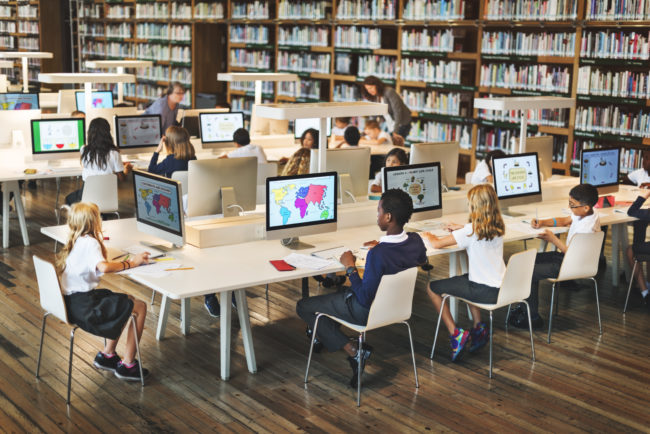Technology is a tool and as anyone with kids knows, give a child a tool and they’ll find a way to use it! Here are a few of the newer ways technology and childhood learning are coming together.
Creative Outlet
Children’s imaginations are limitless and they apply their imagination to everything, including technology. Robotics kits, coding programs built for kids and 3D printers are a few of the new tools available for creative expression. And you may be surprised by the form that expression takes. A child might build a robotics kit in the “wrong” way, eschewing instructions for free-form interaction. Encourage creative use, even if it feels like the “wrong” way to do it. The learning process is messy and children thrive in the middle of the mess.
Socialization
Technology brings people together. Kids learn to take turns with games, whether that game is a board game or an app on a tablet. Some technology encourages children to work together to solve a problem, build a piece of equipment or work together in a digital game to accomplish a goal. With each interaction, children are learning important social structures and rules.
Deepen Interests
We have more access to information than ever before. That can be frightening, but guided information searches on appropriate platforms open new worlds. Children can feed their curiosity, learning about everything from animation techniques to sports history to how to draw and everything there is to know about animals.
Early Exposure to STEM
A STEM education holistically teaches science, technology, engineering and mathematics. Technology can help strengthen children’s skills in these areas and prepare them for a future in which these fields are increasingly important. A child who has trouble learning math concepts while sitting at a desk might pick up those same concepts with ease on an interactive computer program. Building a remote control car can also teach mathematics and engineering skills. And children who are familiar with STEM fields early on may be better equipped for the rest of their education.
Assistive and Adaptive Tech
Assistive technology enables children with learning differences to work in an environment more suited to them. For instance, alternative keyboards can help students who have trouble typing. Some tools can improve focus and help students organize tasks into an appropriate order of importance. Technology can also help children feel a sense of independence and control. A child who has trouble processing information in a timely matter can use a recording device to help them learn at their pace. Or, a child with motor skill impairments might benefit from using electronic math work sheets. The applications are nearly endless. Technology has many creative ways to act as a solution that better enables a child to learn.
Play!
There’s no getting around it, kids learn through play. New technologies can make a game out of anything, from measuring how fast a child can run to identifying trees on a trail to photographing the world around us. Encouraging play encourages learning and that’s what kids do best.
If you are wondering how much screen time you should give your child, the American Academy of Pediatrics has a media tip guide you can learn from here.


